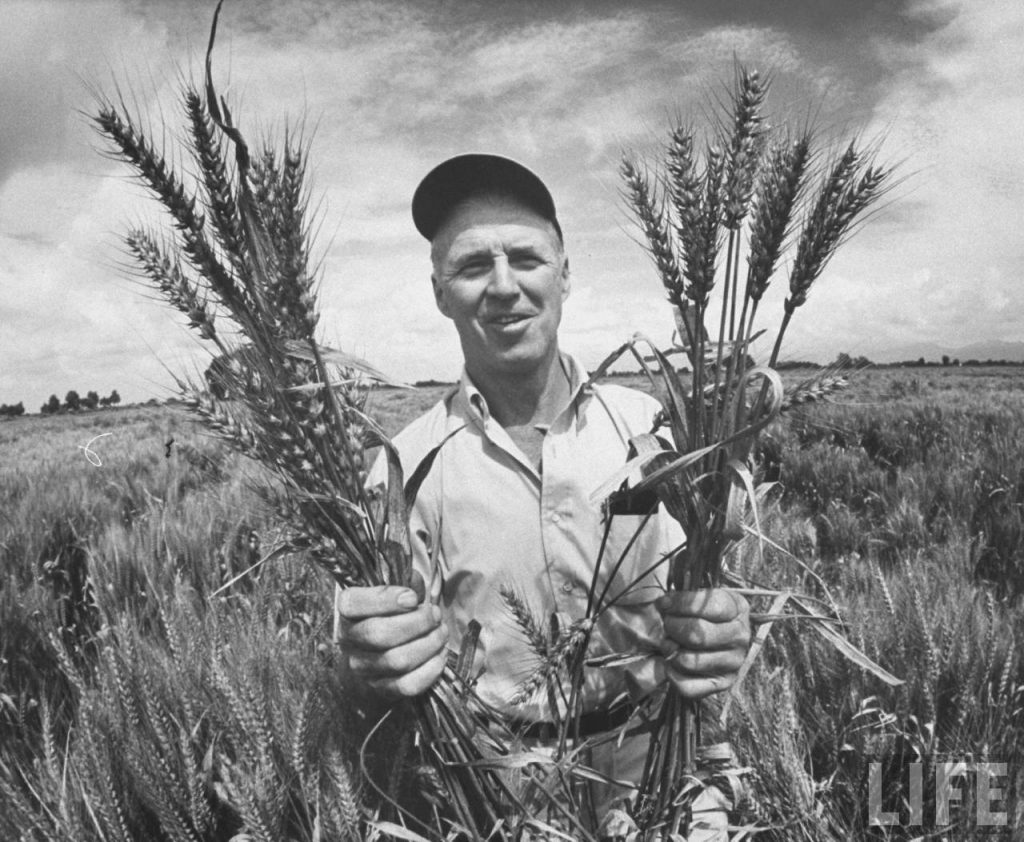
Norman Borlaug may be the most remarkable person you’ve never heard of.
The American agronomist, who died in 2009 at the age of 95, revolutionized global food supplies.
In the words of former Minnesota Senator Rudy Boschwitz, “Norman Borlaug is the first person in history to save a billion human lives.”
Hunger has always stalked humanity. In France alone between 1300 and 1900 there were 79 failed harvests and accompanying famines – and France is historically one of the world’s wealthiest nations. Over the centuries, most of our planet’s residents have been stunted, skinny, and short, having failed to consume enough calories and nutrition to thrive. The average life expectancy for Americans in the year 1900 was just 49.
As the world’s population surpassed 1.5 billion at the dawn of the 20th century, scientists and sociologists shuddered. They remembered the dire warnings of Thomas Malthus, the 18th century British cleric and economist who assured his readers that the arrival of more people would lead to mass starvation. According to Malthus, human population would multiply exponentially while food supplies could grow only arithmetically. Thus there would never be enough corn, wheat, and rye for millions of new mouths. Supply and demand would finally be balanced, he predicted, only by means of massive “die-offs.”
By the 1960s, “neo-Malthusians” were sounding the alarm. “The battle to feed all of humanity is over,” wrote Paul Ehrlich in his 1968 bestseller The Population Bomb. He and like-minded colleagues forecast that hundreds of millions of people would die of starvation before the year 2000.
But it never happened.
Even as the world’s population has soared to 7-plus billion, food shortages have become rare. Surpluses are increasingly common. Well into the 21st century, global deaths by starvation have actually dropped by 98%.
What in the world (literally) accounts for this miraculous turn of events?
What Malthus, Ehrlich, and a host of others never imagined was the possibility that humanity might figure out a way to grow more food. Norman Borlaug led the way. After World War II the agronomist from Iowa became obsessed with the challenge of developing better crops. After extensive research he produced multiple varieties of high-yield, disease-resistant wheat. Borlaug introduced his new species to Mexico in the 1940s. Within a few years that nation’s harvest had grown by 600%.
Borlaug was eager to export his life-saving grains to Asia. Critics objected. If there was more food to eat, they argued, the population would explode, creating the miseries of famine. It was better simply to let Nature take its course. Why give people hope?
Refusing to be taken in by such morbid talking points, Borlaug traveled to India and Pakistan in 1963 and personally supervised the distribution of his wheat. The two nations were actually at war with each other, and Borlaug recalled planting seed within sight of artillery flashes. But both populations were starving, and their governments welcomed any kind of agricultural intervention.
The results were astonishing. Yields rose by 70% the very first year. There weren’t enough workers to bring in the harvest. Within a few years both countries were self-supporting, growing seven times as much grain as before.
Advances in agricultural technology, refrigeration, and transportation accelerated what became known as the global Green Revolution. Did fertility rates rise? They actually plummeted. In low and middle-income countries, the number of children per woman during the past half century has dropped from 6.1 to 2.6. Today the world’s little ones are comparatively taller, healthier, and better educated. The average global lifespan is now a stunning 71 years.
Those aren’t the only benefits of multiplying the world’s food supplies. Ecologists estimate that millions of acres of what used to be farmland will revert to wilderness by the end of this century, assuring the survival of billions of trees and animals that would otherwise have stood in the way of desperate human agricultural efforts.
No one was surprised when Norman Borlaug received the Nobel Peace Prize in 1970 because of his efforts to feed a hungry world. We can thank God for his relentless efforts.
Historically, people of faith have wondered exactly how to respond to major global issues. Aside from the advice that many of us received as children – “Clean your plates, since there are kids all over the world who will go to bed hungry tonight” – we have wondered how to respond. How to pray. Which global relief organizations are worthy of our support.
And underneath it all is a crucial question: Does God really care about all the people in the world?
Jesus answered that question in a parable he shared towards the end of his ministry. At the end of history he will preside as Judge over humanity. He will say to those who are entering his kingdom, “For I was hungry and you gave me something to eat, I was thirsty and you gave me something to drink…” They will ask him, Lord, when did we ever do such a thing? And he will answer, “Whatever you did for one of the least of these brothers and sisters of mine, you did for me.” (Matthew 25:35-40)
Mother Teresa of Calcutta, now a Catholic saint, was surely right when she said, “If you can’t feed 100 people, then feed just one.”
We probably won’t win a Nobel Peace Prize or be credited with saving a billion lives.
But every time we offer food, shelter, or comfort to one of “the least of these,” we’re closing the gap between this hurting world and the fullness of God’s kingdom.
